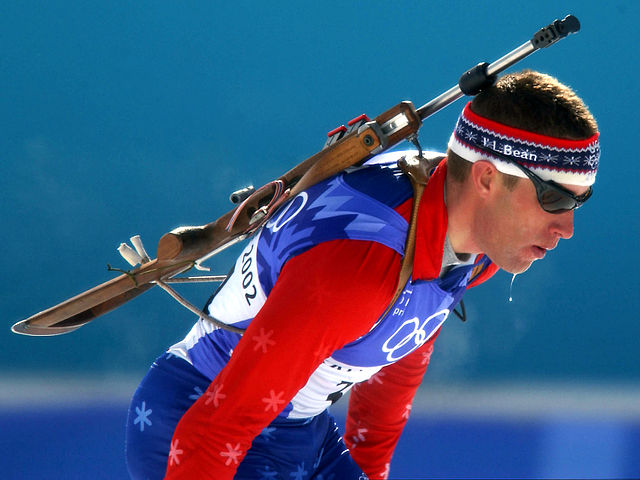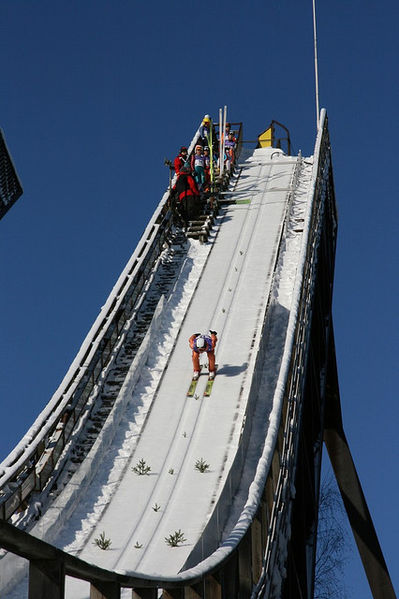The Winter Paralympic Games is an international multi-sport event where athletes with physical disabilities compete in snow and ice sports. The event includes athletes with mobility impairments, amputations, blindness, and cerebral palsy. The Winter Paralympic Games are held every four years directly following the Winter Olympic Games and hosted in the same city. The International Paralympic Committee (IPC) oversees the Games. Medals are awarded in each event: with gold for first place, silver for second, and bronze for third, following the tradition that the Olympic Games began in 1904.
One of the four Paralympic cauldrons located in Yanqing during the 2022 Winter Paralympics
Official sticker from the first Winter Paralympics held in Örnsköldsvik, Sweden, 1976
Paralympian Andy Soule in the 12.5 km cross-country race at the 2010 Winter Olympics
Ice sledge hockey game at the 2010 Winter Paralympics
Winter sports or winter activities are competitive sports or non-competitive recreational activities which are played on snow or ice. Most are variations of skiing, ice skating and sledding. Traditionally, such games were only played in cold areas during winter, but artificial snow and artificial ice allow more flexibility. Playing areas and fields consist of either snow or ice.
Skating in the 17th century
1901 Davos travel poster
United States biathlete Jeremy Teela at the 2002 Winter Olympics.
Ski jumping at Salpausselkä in Lahti, Finland in 2010








